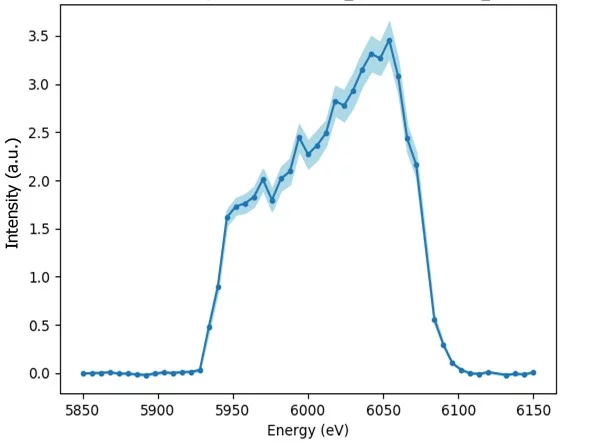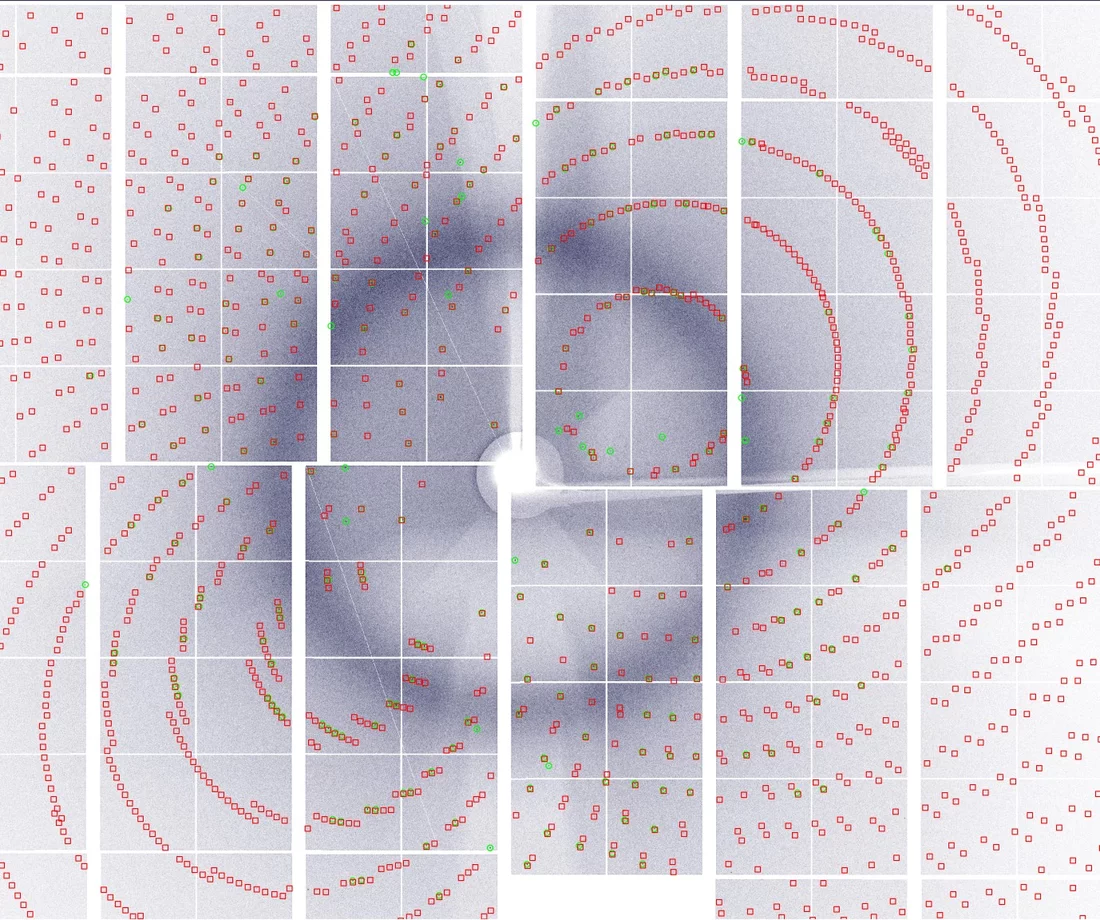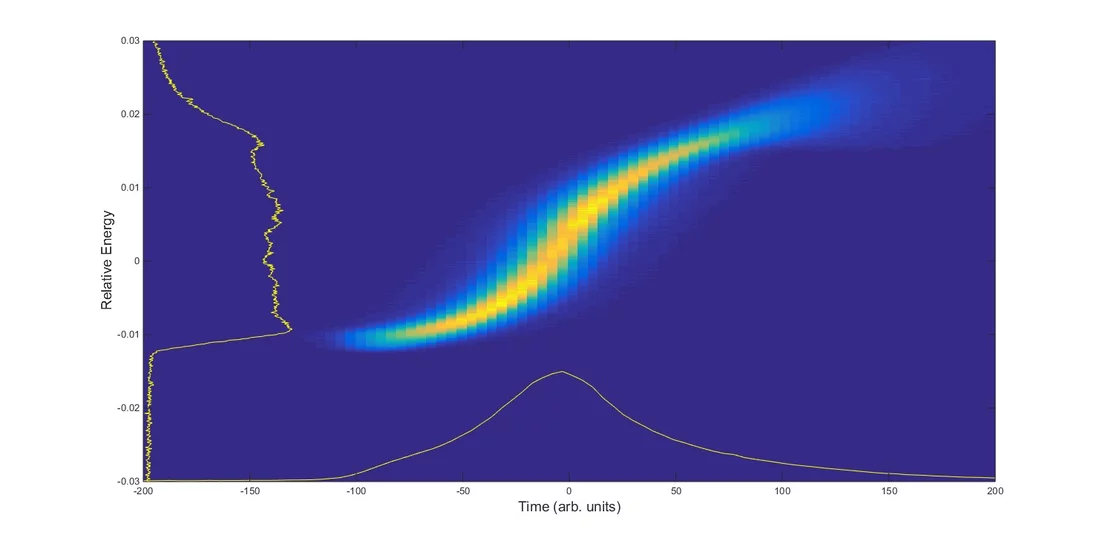The typical mode of operation at XFEL facilities uses the so-called self-amplified spontaneous emission (SASE) process to generate the short, bright X-ray pulses. This mode of operation is stochastic in nature, causing some variance in intensity and spectrum on a shot-to-shot basis, which makes certain types of crystallographic measurements much more challenging. In serial femtosecond protein crystallography (SFX) experiments, small bandwidth and low energy jitter of the X-ray pulses is desired to minimize the influence of random errors on data quality. On the other hand, the unknown partiality of reflections arising from still exposures of crystals in random orientations with narrow bandwidth X-ray pulses complicates the extraction of full Bragg peak intensities that are necessary for protein structure determination. The large bandwidth mode of operation of SwissFEL can generate X-ray pulses with up to 4% ΔE/E spectral bandwidth. This unique mode can be used to reduce the partiality of individual reflections thus to obtain structural information from protein crystals with less sample and beamtime. A recent experiment at SwissFEL took advantage of this special operation mode to investigate what impact the large bandwidth has on SFX experiments and whether SFX data quality can be improved.
In contrast to nominal SASE bandwidth (~0.2% ΔE/E), large-bandwidth XFEL pulses cover a large volume of the reciprocal space and result in the measurement of full Bragg reflection intensities per single shot, helping to reduce the partiality problem in SFX. This may be beneficial for SFX because it can result in obtaining accurate estimations of the structure factors with fewer diffraction images than it is necessary with narrow-bandwidth XFEL pulses. Since sample consumption is an on-going issue for SFX experiments, which require a fresh sample volume for each XFEL pulse, this has the possibility to allow researchers to measure protein structures from smaller amounts of sample, increasing the efficiency of SFX experiments.
SwissFEL takes advantage of some unique aspects of its electron accelerator design to produce these large bandwidth X-ray pulses. When the electron bunch passes through the accelerating structures of the main accelerator, self-induced wake fields force the electron beam to lose energy. In normal operation, the electron beam is conditioned to compensate these effects and to produce the narrow bandwidth of the SASE FEL spectrum. This cancellation can be disabled by overcompression in the second bunch compressor, allowing the wakefields to induce a strong energy chirp along the bunch (see Figure 3), which then translates into a frequency chirp of the FEL pulse. Since SwissFEL operates with C-Band RF-structures, the wakefields are stronger than those at LCLS and European XFEL, maximizing the achievable chirp to over 2 percent, which results in over 4% bandwidth of the X-ray pulses.
Recently, a team of PSI scientists in collaboration with scientists from the Centre for Free-Electron Laser Science (CFEL), Hamburg, performed the first SFX experiment using the large bandwidth mode of SwissFEL. In this proof of principle experiment, X-ray pulses with approximately 2.5% bandwidth (see Figure 1) were used to record diffraction images from model protein crystals. These X-ray pulses have similar properties to normal SASE pulses, including number of photons and pulse duration, allowing them to be used interchangeably with SASE mode for SFX experiments. Simultaneously during the measurements, per-shot spectra of the X-ray pulses were recorded to aid the development of the broadband specific SFX data analysis algorithms. While the data analysis from the first broadband SFX experiment is ongoing, the SwissFEL staff focuses on improving the methodology and diagnostics tools to further develop and establish this mode of operation.
Contact
Dr. Karol Jan Nass
Instrument Scientist
Paul Scherrer Institute
Forschungsstrasse 111
5232 Villigen PSI
Switzerland




